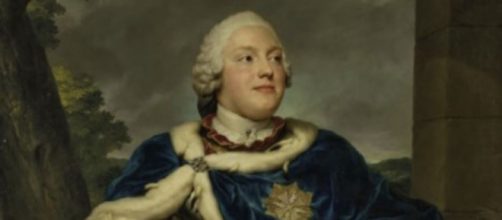In this land where truth is a relative term and alternative facts are an accepted reality, the art world is not immune.
Consider the way the J. Paul Getty Museum describes its recent acquisition. "Portrait of Friedrich Christian, Prince of Saxony," by 18th-century painter Anton Raphael Mengs, is said to “captures the energy and optimism of a youthful prince.”
But the painting doesn’t appear to capture those things.
Glittering generality
Look at the eyes in the prince’s markedly bedecked figure postured as a high-ranking military man. Do you see energy or optimism in his sidewise glance?
Of course, descriptions can vary and so can interpretations. But vary is the operative word. You can’t make stuff up.
The eyes have it, and they look wary, not optimistic. If anything, they suggest passivity. Another questionable description from the Getty: “The prince adopts a self-assured attitude.” Does he look all that confident to you?
The museum reasons that one of the prince’s knees is bent, suggesting a nonchalant crossing of one leg over the other. And, as if to beef up the “self-assured attitude” the Getty describes the prince’s weapons of war, noting his one hand holding a baton and the other resting on his helmet.
But these things are obvious props signify nothing of his actual attitude.
What does that even mean?
The Getty description also calls attention to the prince’s “soft, good-natured features.” Can facial features speak of one’s personality? There’s also this: “The quick intelligence apparent in his bright, delicate eyes.” Who writes this stuff? Surely not a curator.
The Getty website boasts: “Our work continues to advance the presentation, conservation, and interpretation of the world’s artistic legacy.” Wait up, Getty. Before there’s any more “presentation,” you need to take another look at Meng’s portrait.
Also check for contradictions. The Prince of Saxony reportedly suffered cerebral palsy. The Getty acknowledges this, saying that “would have prevented him from assuming the easy, confident stance shown in his portrait.”
But wait.
That wary look in the prince’s eyes may not reflect his physical condition at all. That very same look can e seen in Meng’s “Self-Portrait.” Like the prince’s image, Meng’s gaze is also askance. What’s more, the painter also assumes that same studied, staged gesture of high status.
Apparently, Mengs tended to pomposity. Art historian James Northcote made this observation in his 1901 book “Conversations with James Ward:” “Mengs affected the great man; to be sure, the court that was paid him, even by crowned heads, might in some measure excuse it.”
Full of himself
Northcote continued: “I remember once seeing Mengs come along with a whole train of his pupils to see these tapestries from Raphael’s cartoons in front of St. Peter’s; he marched on before it, with a ridiculously pompous air, and they walked behind him just as the cardinal’s attendants did.”
Sounds a bit like Trump and his minions, don’t you think?


